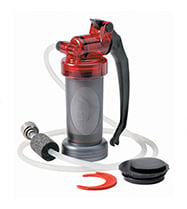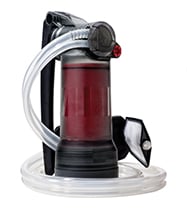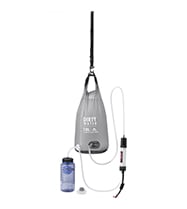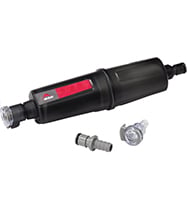Water 101: Clean Water Solutions to Prepare for Emergencies
Water is our most important resource, but you never know when a disaster could compromise your local water supply. While the novel coronavirus has not been detected in drinking water supplies, according to the World Health Organization, many of you have reached out about emergency water filter options as you build out your disaster kits. We’ve put together the information you need on some clean water solutions to help ensure you have access to water that’s safe to drink during all kinds of emergencies.
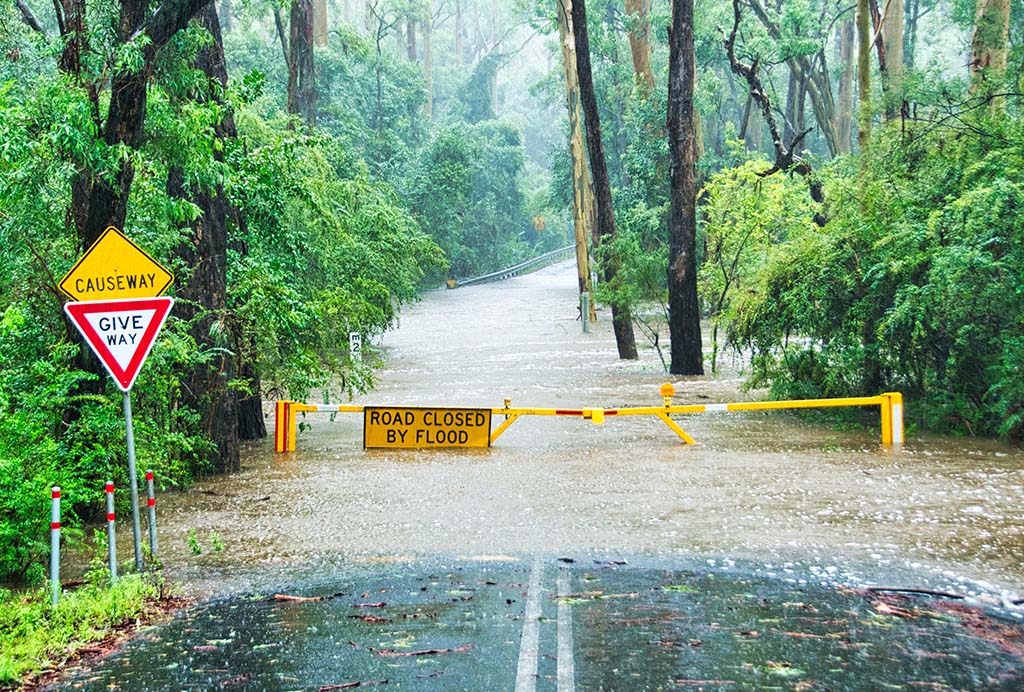
Clean Water Threats
When drinking water is contaminated in municipal or developed areas, the immediate threat to human health is the introduction of waterborne pathogens—microscopic disease-causing bugs. These include bacteria, protozoa and viruses, all of which are normally removed by the city treatment center long before water ever flows out of your tap.
In a disaster situation, contamination of the existing municipal water supply can happen quickly. For example, a sewer line can break, intermixing sewage with your clean water supply and introducing those pathogenic agents.
Natural disasters can damage a range of water systems. If, for example, an earthquake or landslide sends debris or sediment into a reservoir or breaks a water main, you could be forced to source drinking water from surface water, which is unsafe to drink without treatment.
In squalid conditions—especially following natural disasters—poor sanitation can quickly lead to pathogens from human and animal waste mixing with the drinking water. Being prepared for the unexpected will help ensure that you and your family avoid sickness from the water you drink.
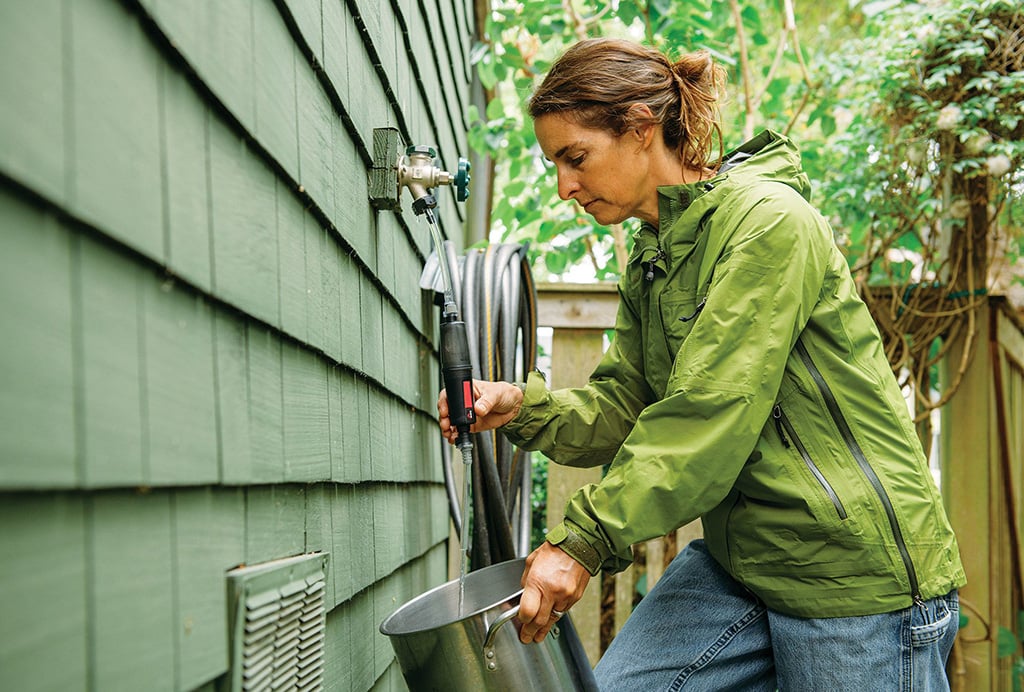
Preparing for a Water Emergency
An individual’s water needs will vary depending on age, health and climate (water needs can double in hot temperatures). But in general, you should plan for a minimum of one gallon of water per person per day, to be used for drinking and sanitation purposes (food prep, washing dishes, brushing teeth, etc.). The best solution is to stock a supply of store-bought water (with expiration dates clearly marked) in a cool, dark place. The CDC recommends having at least a three-day supply on hand.
But because you don’t know how long you could be without water, it’s also important to have a water treatment solution: a personal, portable treatment system that will remove waterborne pathogens and other potential contaminants. These include:
- Viruses (e.g. norovirus, rotavirus and hepatitis A): Spread to humans by human fecal waste
- Bacteria (e.g. Salmonella and E. coli): Spread by humans and animals
- Protozoa (e.g. Giardia and Cryptosporidium): Spread by humans and animals
- Sediment/dirt/silt: Not particularly harmful to health, but unpleasant or inhibiting
- Organics (e.g. petroleum, herbicides, pesticides, heavy metals and other chemicals): Harmful with repeated exposure
Your emergency water treatment solution must guard against the first three (the bugs) to protect you from immediate illness, but it’s best to remove all if you can. Of course, there are different options for getting there.
Recommended Emergency Water Filters and Purifiers
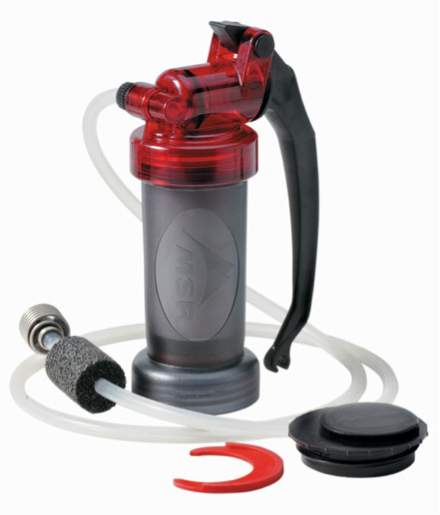
MiniWorks™ EX Purifier System
The MSR MiniWorks EX Purifier System includes the MiniWorks microfilter, which uses a ceramic/carbon filter element, and Aquatabs purification tablets. Microfilters will remove sediment, protozoa and bacteria from the water, and those that contain carbon, like the MiniWorks, will pull out many chemicals and other impurities, like tastes and odor.
To combat the tiniest of the pathogenic bugs—the viruses—you’ll need a purification solution, like Aquatabs chlorine-based tablets. Of the options available, chlorine-based tablets and UV treatments are the easiest to use. However, while UV treatments can be good for neutralizing viruses in clear water, viruses can actually hide behind silt or sediment in murky water, essentially avoiding deactivation by the UV. In addition, UV won’t protect your water from cross-contamination the way that a chemical solution can.
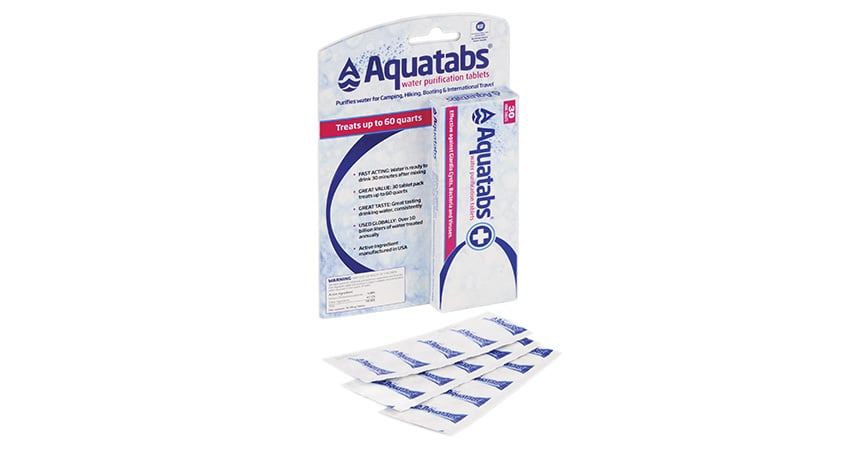
Aquatabs®
A chlorine-based solution, for example, not only kills viruses (and bacteria and protozoa) in your water bottle but also maintains water purity long after the initial disinfection process, giving you a second line of defense against viruses that could be lurking on the bottle thread or lid, ready to re-infect your water.
Aquatabs come individually foil-wrapped and offer a long shelf life of five years.
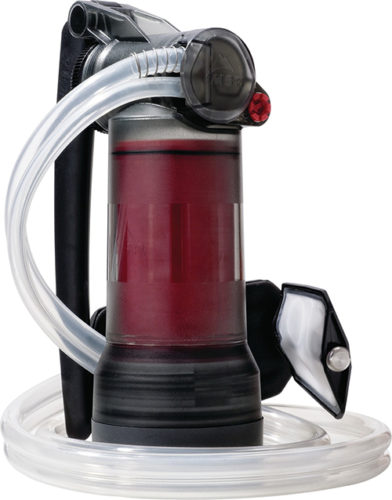
Guardian® Purifiers
Other reliable options are the MSR Guardian Gravity Water Purifier and the pump-action MSR Guardian Purifier, which are physical purifiers. This means they physically strain out the pathogenic bugs in the same way as a microfilter. But whereas microfilters only remove bacteria and protozoa, a purifier also removes viruses (which are too small for microfilters to catch).
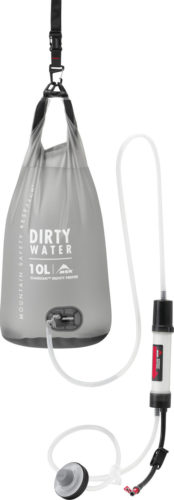
Because of this, you do not need to add Aquatabs purification tablets to the water afterward to combat viruses. Both Guardian options offer the ease of a microfilter with the extra defense of a purifier.
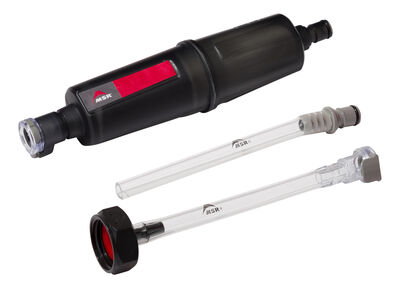
MSR Home Emergency Water Filter Kit
Our Home Emergency Water Filter Kit was designed specifically for tossing into your home disaster kit. It makes use of the Thru-Link microfilter and comes with adapters for threading it onto your home spigot. The microfilter removes bacteria, protozoa and sediment, and includes a carbon element for reducing chemicals tastes and odors. Add Aquatabs purification tablets, sold separately, for defense against viruses.
The kit comes in a hermetically-sealed bag that protects it during long-term storage. When you’re ready to use it, simply rip the bag open and the device is ready to go. It delivers clean water fast from standard home spigots, and in fact, it’s been used by the U.S. military for more than a decade.
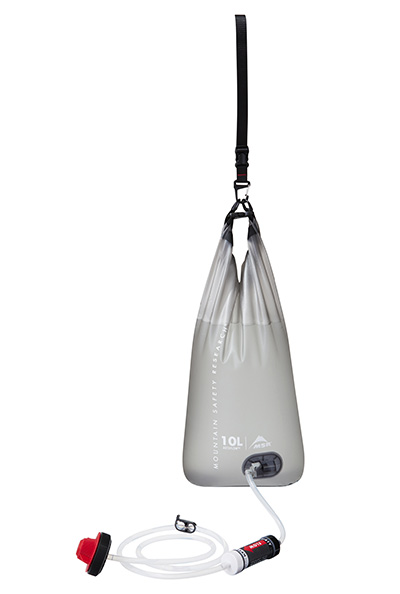
AutoFlow Gravity Microfilter + Aquatabs purification tablets
For small groups, the AutoFlow™ Gravity Microfilter with the addition of Aquatabs purification tablets, sold separately, makes a great combo. The filter removes the bacteria, protozoa and sediment. The Aquatabs tablets add defense against viruses. The filter’s 10-liter reservoir bag is large enough to supply a basecamp, and just one filtered bag provides a whole day’s drinking water for two.
Boiling
Boiling water will also render it potable (safe to drink), killing all threats including viruses. However, boiling water can use a large amount of fuel, which may be a critical resource during emergency situations, and it doesn’t leave you with clear water.
Plan B Clean Water Solutions
It’s always best to plan ahead for emergencies, but if you missed your window, here are important methods recommended by the CDC and also detailed in the federal government’s Resolved to Be Ready campaign, which allow you to work with resources you have at home.
- Start with the cleanest water possible. If your available water is murky or sandy, let the sediment settle, then pour the water into another container to help filter out the sediment.
- Boil your water. Be sure to maintain a rolling boil for a full minute. If you live at high altitudes, it’s safer to boil for 3 minutes.
- Use regular household bleach. The CDC recommends adding 16 drops (1/8 teaspoon) of unscented, liquid household bleach per gallon of water. Stir and let stand for 30 minutes before drinking.
- Distill your water to kill any resistant germs and remove other organics. Distilling requires boiling water and collecting only the condensed vapor.
As you can see, you have several options for disinfecting water in an emergency situation. It pays to be prepared for the worst, so use these tips if you’re in the process of building your home emergency water supply kit.
Related Posts:
- Emergency Water Filters: A Closer Look
- Water 101: Decoding Water Filter Testing Claims
- MSR Water Products & Treatment Systems Guide
Updated. Originally Published April 27, 2017.

